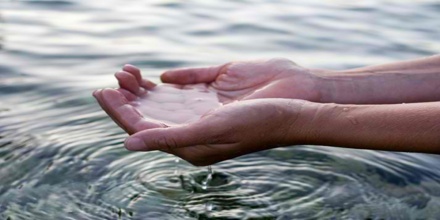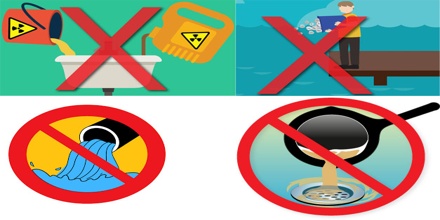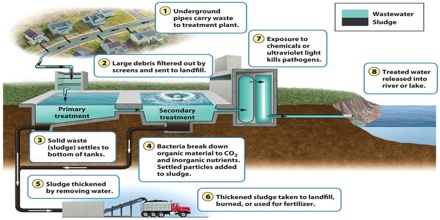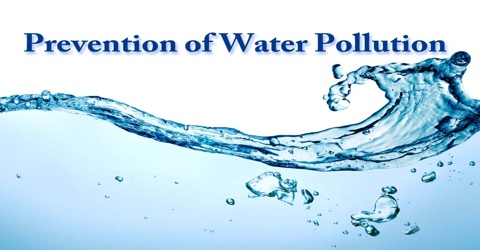Prevention of Water Pollution
Water pollution is caused by many factors including but certainly not limited to: uncontrolled construction sites, leaking sewer lines, storm-water runoff, accidental spills and leaks, improper discharge of wastes, mining activities, foundries, animal waste, and others.

Fresh water is one of the most vital resources for all life on earth. Much of the water we count on daily for cooking, bathing and other routine activities is supplied from rivers, lakes and other surface water sources. However, without widespread care and appropriate protection and treatment systems, our water sources are becoming more and more polluted. As a result of needs that have exceeded funding, there is an ever increasing gap occurring between the amount of public funding available and the measures truly needed for implementing the quantity of water pollution solutions.
Dirty and polluted water is the world’s primary health concern and persists to pose threats to the survival of humanity and quality of aquatic life. Many water resources are more and more becoming vulnerable to pollution by toxic chemicals, dirt, garbage, and pathogens. This has led to contamination of drinking water and making the aquatic habitat unbearable thereby steadily degrading the quality of public health and aquatic life.

Causes of Water Pollution
- Water pollution may be caused by the intentional or unintentional disposal of hazardous chemicals and materials into a body of water.
- Rainfall may cause polluted landscapes to disperse their poisonous materials into the water and poison the surrounding water.
- Water pollution may also be caused by specific points or contributing factors such as large factories, oil refineries, construction sites, chemical waste management facilities, dump sites and other large scale operations that store/produce large amounts of chemical/hazardous waste.
Water Pollution Solution
The key solutions to water pollution come down to individual responsibility because we all have a direct impact on the environment. There are multiple solutions for reducing water pollution, and people can participate in different ways depending on where they live. For those who live in the city, walking or using electric public transportation are good alternatives to contributing to emissions from cars and buses. Alternatively, for those who live in a more suburban or rural area, an electric car is an option to consider. No matter where a person lives, reducing use of man-made, dangerous chemicals for cleaning purposes is an essential part of keeping water clean.
The sewage systems in most areas are old and do not properly clean out many of these chemicals efficiently. Updating the sewage and water treatment systems has a positive impact on the amount of pollution present in the water supply. Additionally, recycling whenever possible is essential as this keeps items that are not biodegradable, such as plastics, out of the water supply.

Agricultural production practices qualify as massive causal agents for water pollution. Sediments are washed off from agricultural lands into lakes, rivers, and oceans causing silt depositions. Farmers can utilize erosion and sediment control methods to limit runoff currents and hold back the soils on their farms.
Green agricultural practice techniques like crop rotation, mulching, planting perennial crops, contour plowing, and installing silt fences can minimize the effects. Commercial fertilizers and animal manure applied to agricultural lands contain nitrates and phosphates that are washed off into water bodies. Likewise, pesticides and herbicides have chemical contaminants that are washed into the lakes, rivers, and oceans by storm water.
In order for countries to keep their water clean and uncontaminated there are a number of factors that can be implemented to insure that the water on our earth remains clean and if contaminated can be filtered so that the poisonous materials can be removed.
For beginner’s factories, construction sites, chemical waste facilities and other large buildings that create large amounts of pollution should make sure that their waste is being disposed of properly. Proper disposal/containment of toxic chemicals/materials before they have an opportunity to reach our oceans and lakes would go a long way towards improving the current condition of our water.

Anti-pollution laws and regulations at local, state and international levels are perfect measures for curtailing water pollution. Laws have always played an excellent role to ensure water pollution levels are kept to the minimum. Environmental protection policies such as the Clean Water Acts work to ensure that anti-pollution laws are effected and apply to all significant waters including ground water. These laws can as well establish measures that put restrictions for top water pollution problems such as sewage and industrial waste treatments and garbage management. These laws should be directed to marketplaces, industries, hospitals, schools, and the local councils.
There are immeasurable ways individuals and groups can take initiative or educate people on the dangers of water pollution. It is always a great starting point as a means of fighting the wider causes of water pollution. Individuals and groups aware of the dangers of water pollution can educate family, friends, and even the society as a whole through joint campaigns and advocacy.
Planting lots of trees and vegetation within our localities can reduce storm water currents, so that when it rains, sediments and chemicals do not easily drain into the waters.
















